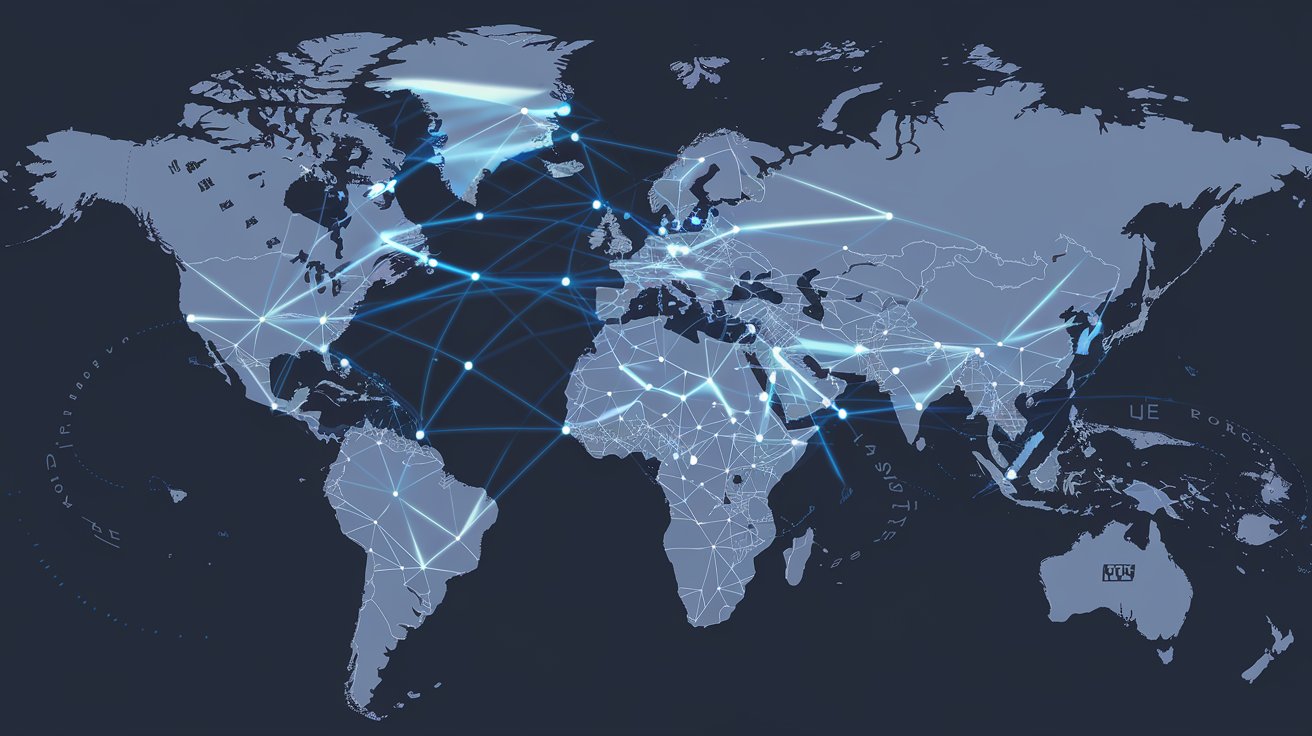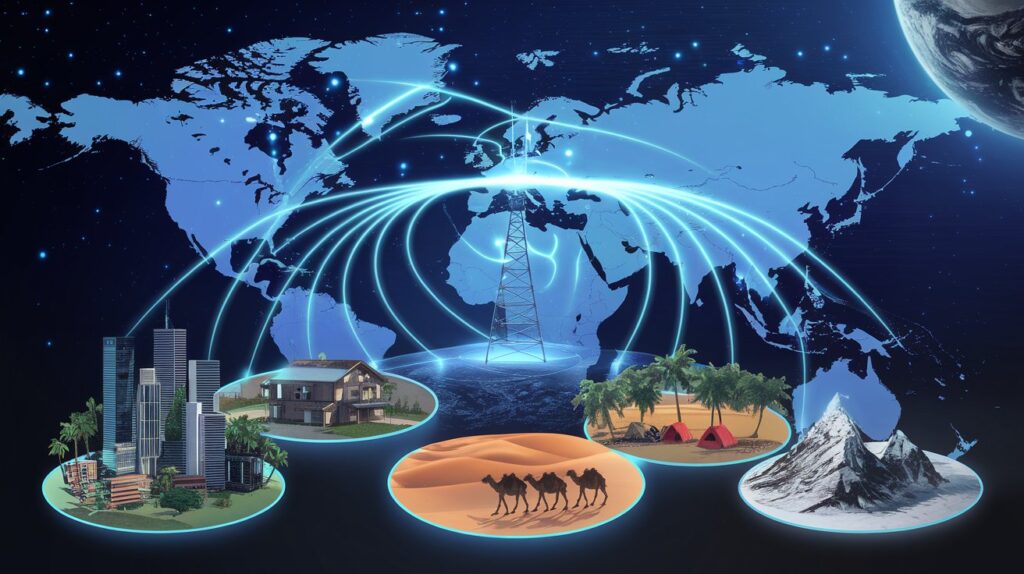The advent of 5G network technology is not merely an incremental upgrade from its predecessors but a transformative leap forward that holds the promise of reshaping how we connect, communicate, and conduct business globally. As 5G networks roll out across various continents, including North America, Europe, and beyond, the potential for innovation and growth is unprecedented. In this article, we delve into the far-reaching effects of 5G network expansion, exploring its implications for the USA, UK, Poland, and Italy, while also providing insights into the technology’s future trajectory.
What Is 5G and How Does It Differ From Previous Generations?
5G technology represents the fifth generation of mobile network technology, succeeding 4G LTE. Unlike its predecessors, 5G offers several key advancements:
- Increased Speed and Bandwidth: 5G networks promise download speeds up to 100 times faster than 4G, with peak speeds potentially reaching 10 Gbps.
- Low Latency: 5G significantly reduces latency, with potential delays as low as 1 millisecond, compared to 30-50 milliseconds in 4G.
- Enhanced Connectivity: The technology supports up to 1 million devices per square kilometer, addressing the growing demand for IoT (Internet of Things) connectivity.
- Improved Reliability: With more reliable connections, 5G enhances the performance of critical applications such as remote surgery and autonomous vehicles.
5G Network Expansion in the USA
The United States is at the forefront of 5G network deployment, with major carriers like Verizon, AT&T, and T-Mobile spearheading the rollout. The expansion is driven by several factors:

- Economic Impact: The implementation of 5G technology is projected to contribute over $500 billion to the US economy by 2030. This includes job creation, increased productivity, and new business opportunities.
- Urban and Rural Coverage: While urban areas have seen significant 5G coverage, rural regions are also gradually receiving access. This expansion aims to bridge the digital divide and promote inclusivity.
- Innovation Hubs: Cities like San Francisco, New York, and Dallas are emerging as 5G innovation hubs, fostering the development of cutting-edge applications in fields such as smart cities, augmented reality (AR), and virtual reality (VR).
Case Study: New York City’s 5G Revolution
New York City has become a prime example of 5G network impact. The city’s 5G infrastructure is enabling advancements in public safety, including enhanced surveillance systems and real-time data analytics. Additionally, the high-speed connectivity is facilitating the growth of tech startups and boosting the local economy through increased digital engagement.
5G Network Expansion in the UK
In the United Kingdom, 5G technology is rapidly being integrated into the national infrastructure. Key aspects of the UK’s 5G journey include:
- Government Initiatives: The UK government has set ambitious targets for 5G rollout, with the aim of providing widespread coverage by 2027. The initiative is supported by significant investments in infrastructure and research.
- Economic Benefits: The deployment of 5G is expected to generate £173 billion in economic benefits by 2035, including improvements in productivity, innovation, and efficiency across various sectors.
- Smart Cities: The UK is focusing on transforming its cities into smart cities, leveraging 5G technology to enhance urban living through smart transportation systems, energy management, and public services.

Network
Case Study: London’s Smart Infrastructure
London’s 5G infrastructure is revolutionizing the city’s approach to urban management. The implementation of smart traffic systems, integrated public transport networks, and improved emergency response services illustrates the tangible benefits of 5G in enhancing city life and operational efficiency.
5G Network Expansion in Poland
Poland is experiencing a rapid deployment of 5G technology, with significant developments in both urban and rural areas:
- National Strategy: The Polish government has developed a comprehensive 5G strategy aimed at boosting connectivity across the country. This includes investing in infrastructure and fostering public-private partnerships.
- Industry Impact: The expansion of 5G is expected to transform key industries in Poland, such as manufacturing, agriculture, and healthcare, by enabling new technologies and improving operational efficiency.
- Innovation and Research: Poland is becoming a hub for 5G research and development, with numerous projects focused on exploring the potential applications of 5G in various sectors.
Case Study: Wrocław’s 5G Innovation
Wrocław is leading the way in 5G innovation in Poland. The city’s early adoption of 5G technology is supporting advancements in smart agriculture, with applications such as precision farming and remote monitoring. This is enhancing productivity and sustainability in Poland’s agricultural sector.
5G Network Expansion in Italy
Italy is making strides in 5G network deployment, with several key developments shaping its expansion:
- Regional Coverage: Major Italian cities, including Rome, Milan, and Turin, are among the first to receive 5G coverage. The expansion aims to provide comprehensive connectivity across the country, including rural areas.
- Economic Opportunities: The introduction of 5G is anticipated to drive economic growth in Italy, with significant investments in technology, infrastructure, and innovation.
- Sectoral Advancements: Italy is focusing on leveraging 5G for advancements in sectors such as tourism, healthcare, and transportation. The technology is enabling new applications and services that enhance the quality of life

Case Study: Milan’s Digital Transformation
Milan is at the forefront of 5G-driven digital transformation in Italy. The city’s initiatives include the development of smart traffic management systems, enhanced public transportation, and improved connectivity for businesses. These efforts are positioning Milan as a leader in the digital economy.
Looking Ahead: The Future of 5G Network Expansion
As 5G technology continues to evolve, its impact on global connectivity and innovation will become increasingly profound. Key trends to watch include:
- 6G Development: Research into 6G technology is already underway, with potential advancements that could further enhance connectivity and capabilities beyond what 5G offers.
- Integration with AI and IoT: The convergence of 5G with artificial intelligence (AI) and the Internet of Things (IoT) will unlock new possibilities for smart cities, autonomous systems, and data-driven applications.
- Global Collaboration: The future of 5G will involve increased collaboration between countries, businesses, and researchers to drive innovation and address challenges related to cybersecurity, privacy, and infrastructure development.
The expansion of 5G networks represents a transformative shift in global connectivity, with profound implications for various sectors and regions. By understanding and leveraging the potential of 5G, countries can unlock new opportunities for growth, innovation, and improved quality of life.








